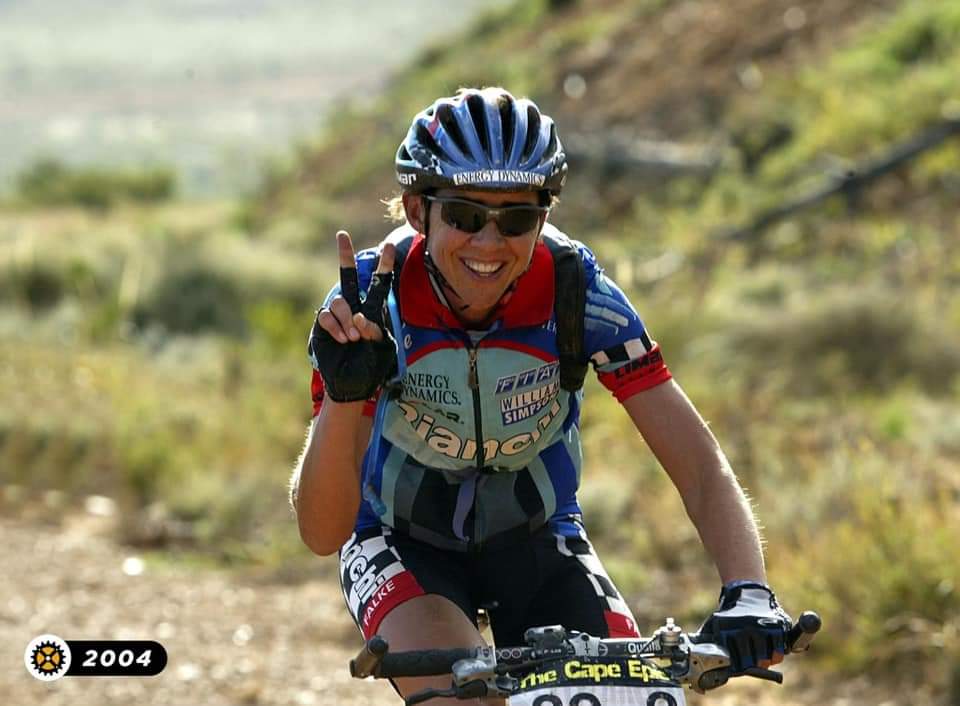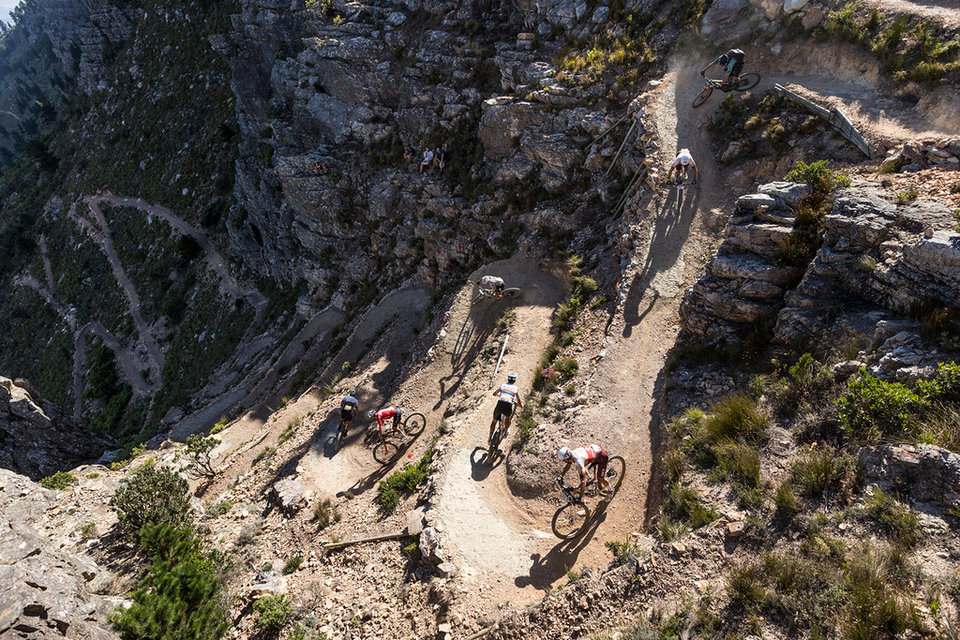Was This
The Toughest Epic Ever?

Last Lioness, Hannele Steyn has ridden every single metre of every single Absa Cape Epic to date. That’s 14 070 kilometres of racing, with 316 012 metres of climbing. Over the last two decades many things have changed, but Steyn’s resolve to complete what she starts has not waivered.

Alongside John Gale, Hannele Steyn is one of only two riders to complete every edition of the Absa Cape Epic. As such she is uniquely placed to rate the 2024 race against challenge presented by previous events… “I think it was one of the toughest routes,” Steyn began, reflecting on one of the key variables which changes in the Untamed African Mountain Bike Race from year-to-year.
“The big difference to previous years’ routes was that it felt like 99% of the climbs and downhills, this year, were on technical singletrack,” she half smiled, half grimaced. “Previous Absa Cape Epic routes features more dual track or smoother surface climbs. The rough terrain we climbed this year made the climbing time longer and our average speed on the climbs less. Which you really felt in your legs. Then the downhills were more technical too, so you had to remain completely focused at all times to avoid making a mistake.”
“The weather will always contribute to the toughness of the Absa Cape Epic,” Steyn noted. “This year we were treated to heat. Last year it was rain. So, it really depends on how you respond individually to the extremes in temperature. Some people thrive in the heat, and struggle in the cold. Personally, I found the heat really though this year, especially on the Queen Stage in Wellington.”



When asked to compare the single most difficult day in 2024 to infamous stages from years gone by Steyn confessed that it is always hard to isolate a particular day. “It is difficult to choose only one day, even from this year’s race,” she laughed. “The Ou Wapad, into and out of the Witzenberg Valley, made Stage 2 really challenging and Queen Stage was really tough too. For me the heat made Stage 4 the toughest one of 2024.”
“Looking back on previous races I think the days when I struggled in particular had a lot to do with challenges I faced beyond the route. Issues like a broken bike, illness, weather, etc, always make for tough days out. But one that stands out, even above all the rest, was that exceptionally hot day in 2022. It was Stage 1 and we climbed back into Lourensford from Mont Marie over Die Nek, taking in a total of 2 850 metres of accumulated ascent in 92 kilometres. I remember it being a very long climb in the baking sun.”

It goes without saying that completing the modern Absa Cape Epic routes would be virtually impossible without modern mountain bike technology. The machines which riders contest the race upon have changed as much as the event itself in the 20 years since the inaugural edition in 2004. “I don’t know if dual suspension bikes existed, for marathon racing at least, in 2004,” Steyn mused. “Obviously 29ers and 27.5 inch wheels definitely didn’t. Twenty years ago I raced the first Absa Cape Epic on a Bianchi hardtail with 26 inch wheels. Eveyone’s forks worked with either oil or spring dampening systems. There were no tubeless ready rims and we had to convert our rims and tyres to tubeless ourselves. It was a tricky business, which required a compressor to seat and seal the tyres to the rims. Sludge was the only sealant and the Europeans did not even know what a thorn was. So, they all rode with tubes, and patching tubes was part of the experience.”
“Brakes worked with brake pads on the rims and basically the only option for drivetrains were 3 x chain rings; maybe a few people had 2 x somewhere, but that was very scarce. There were no 50 or 51's on a cassette, no dropper posts, only cable actuated gears and manual fork lock outs, no magic links, 560-millimetre-wide handle bars and a lot narrower tyres too, with no such thing as strengthened side walls. All told I don’t know how much of the 2024 route you’d survive on a set-up like that.”

“My 2024 bike is a CORECarbon Grezzar, dual suspension,” Steyn said. “It is equipped with a SRAM 12 speed drivetrain, complete with a 32 tooth chainring and a 50 tooth big ring to help flatten out the steep climbs of this year’s route. It also has a dropper seatpost, electronic shifting, DT Swiss fork and shock, 720 millimetre wide handlebar and a Specialized Power Saddle. One of the biggest improvements in mountain bike technology, that people don’t always consider from 2004, are the tyres. I used Continental tyres this year, with improved sidewall protection. Not only are they easier to set up as tubeless than the old ones from the first race all those years ago, but they have far better puncture protection, are much wider and offer more grip across all terrains.”
“The other big improvements from 2004 is in chamois pads, bibshorts and anti-chafe cream,” Steyn explained. “In 2004 we used Vaseline or baby nappy cream. Now we have a selection of specifically formulated options, which combined with much better chamois pads and bibshorts designed it fit women perfectly has made the world of difference in terms of comfort.”
“I was also late to the dropper seatpost craze,” Steyn confessed. “Last year, still, I opted for a lighter bike and a rigid carbon seatpost. This year I don’t think I would have made it through all the technical trails without a dropper seatpost! The routes are unquestionably much more challenging now, but also much more exciting. The climbs steeper and more technical and the downhills and Toyota Tough segments bring a whole new challenge for you and your bike to handle. Riding the Absa Cape Epic without a dropper seatpost is just going to make your life harder and less enjoyable.”


More about The Last Lioness

The Last Lioness
Grateful to be healthy enough to ride and eager to inspire more women to take on the Absa Cape Epic Hannele Steyn is focused on beating off John Gale and earning the Last Lion trophy. Her palmarès extends far beyond simply finishing every edition to date. Steyn won the 2005 event, alongside Zoe Frost and has lent her name to the Absa African Women’s trophy. She is a former world champion triathlete, a multiple South African mountain biking champion, and the founder of the wholefood brand Passion4Wholeness. Off the bike she is a geneticist and microbiologist with a diploma in nutrition for good measure too.
